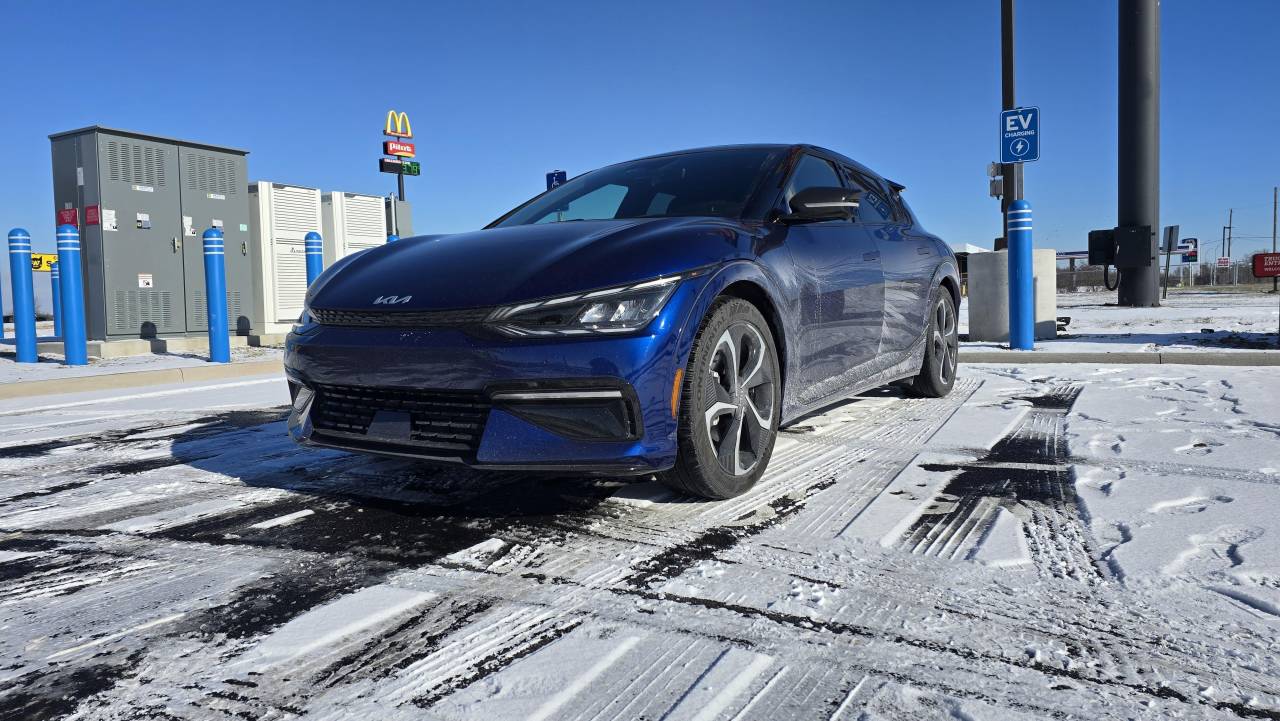While electric vehicles were once viewed primarily as eco-friendly alternatives offering lower emissions and reduced fuel costs, today's EVs have evolved into sophisticated machines that often outperform their gasoline counterparts. Despite this rapid technological advancement, misconceptions persist - particularly around winter driving capabilities. During Michigan's harsh winter months, we put these concerns to the test with Kia's EV6, one of the most compelling electric vehicles on the market. What we discovered wasn't just a car that could handle winter conditions but one that excelled in ways that might surprise even the most skeptical drivers. From its advanced torque-vectoring systems that provide exceptional traction control to sophisticated battery management that ensures reliable performance in sub-freezing temperatures, our real-world testing revealed why modern EVs are redefining winter driving expectations.
What Kind Of Vehicle Do You Drive?
- Electric vehicles perform excellently in winter conditions, dispelling myths about their cold-weather limitations.
- The low center of gravity and instant torque in EVs provide superior handling and traction control on snow-covered roads.
- Built-in battery heating systems and preconditioning features ensure optimal winter performance in modern EVs.
- One-pedal driving technology offers enhanced control and safety during winter navigation.
- Dual-motor EVs deliver exceptional all-weather performance through advanced traction control systems.
Ok, so I'm not stupid - there are very specific scientific realities that make EVs (as well as ICE vehicles) less efficient in extremely cold winter weather. It's complete fair to say that electric vehicles work best in places like California and Florida but that doesn't mean that they don't still work great in places like Michigan when it is 20 degrees and snowing! In fact, the top EV sales per capita are in Norway ... far from a warm weather paradise that is ideal for battery and electric motor performance. If you look further on the list, you will discover that Iceland, Sweden, and the Netherlands are the next countries on the list.
Winter EV Performance: Separating Myths From Reality
While many drivers worry about how their electric vehicles will handle winter conditions, the reality isn't as dire as many folks might think.
You'll find that EVs actually excel in several winter driving aspects, particularly regarding traction control and stability on snowy roads. The one-pedal driving feature provides exceptional control during winter conditions and many modern EVs are equipped with advanced traction control systems that enhance their performance in adverse weather as well
Sure, battery efficiency takes a hit in cold weather - you might see about 17-25% less range depending on whether your EV has a heat pump. During our testing of the Kia EV6, we actually saw a little bit better than this while driving through Michigan on a 20-degree day. This may have been due to our use of moderate driving style designed to maximize range - however we did have heat, heated seats etc. on to maintain our comfort.
Ultimately, this is a testament to modern EVs being designed with winter in mind. Their lower center of gravity and instant torque response give you better handling in slippery conditions than traditional cars. Plus, if you've got a dual-motor setup (as the EV6 GT-Line does), you're getting exceptional traction that'll keep you confident on those icy roads.
Many newer models even have sophisticated heating systems that help maintain range in chilly temperatures. Leading manufacturers like Tesla, Hyundai, and Kia consistently demonstrate superior cold-weather performance compared to other brands.
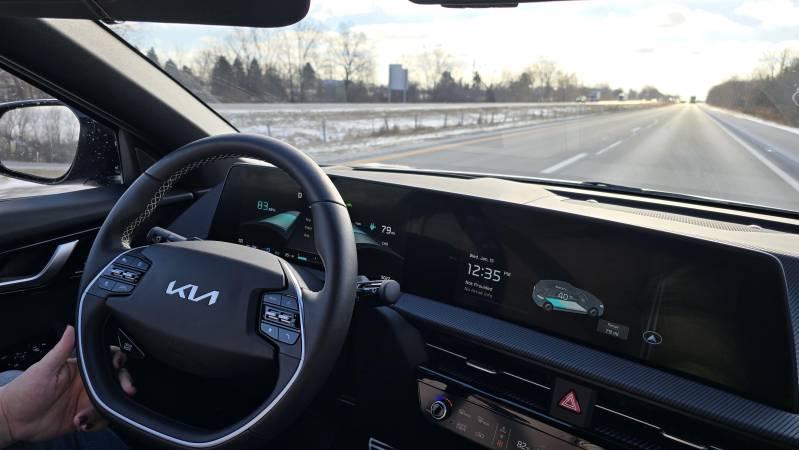
Smart Strategies for Cold Weather Range Management
Cold weather can impact your EV's range, but with the right cold weather driving strategy, you can maximize your battery's performance and drive confidently through winter conditions. Here are four key practices that make a real difference:
- Precondition your vehicle while plugged in before departure - this not only warms the battery to its optimal operating temperature but also lets you use grid power rather than battery power to achieve initial heating, potentially saving up to 15% of your range before you even start driving.
- Utilize seat and steering wheel heaters instead of cabin heating whenever possible, as these targeted heating elements typically consume only 10% of the energy required to heat the entire cabin space through the HVAC system, helping preserve valuable range during cold weather operations.
- Park in a garage or sheltered area whenever available, as maintaining a battery temperature above freezing can significantly improve performance - studies show that batteries kept above 32°F (0°C) can retain up to 25% more range compared to those exposed to subfreezing temperatures.
- Monitor tire pressure weekly during winter months and maintain recommended PSI levels, since cold temperatures can cause pressure drops that increase rolling resistance - properly inflated tires can improve range by up to 3% compared to underinflated ones.
Just like EVs, traditional internal combustion vehicles also face efficiency challenges in cold weather, with gas engines experiencing up to 20% reduction in fuel economy during winter months due to increased air density and fluid viscosity.
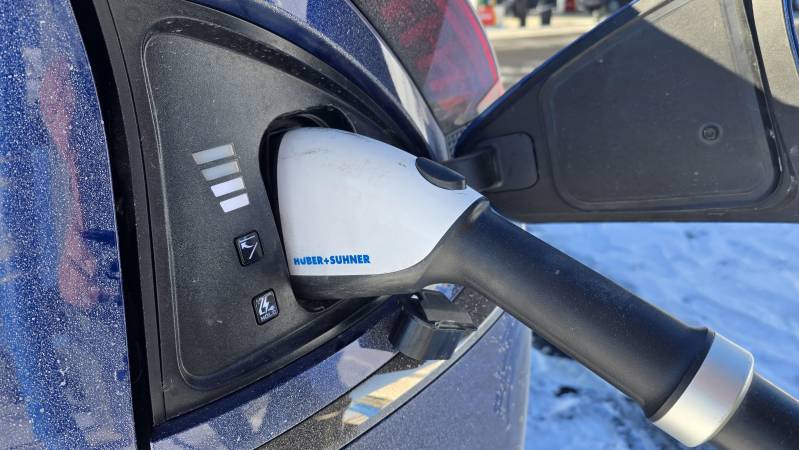
EV Charging in Extreme Cold: Not As Bad As You Think!
Winter weather presents unique challenges for EV charging, with sub-freezing temperatures affecting both charging speeds and battery efficiency. While this might seem daunting at first, understanding how to adapt your charging strategy can make winter EV ownership just as convenient as summer. The key is knowing how to work with your vehicle, the charging infrastructure, and your own comfort needs during these cold-weather charging sessions.
The Chargers: Infrastructure Tips
Cold weather can affect charging equipment just as much as your vehicle. Public charging stations may have ice-covered cables or frozen card readers. Keep a pair of gloves in your car specifically for handling charging equipment. Some newer charging stations include heated cables to prevent stiffening in cold weather, but it's worth checking charging apps like PlugShare for user reports about station conditions during winter months. When possible, choose stations with overhead coverage to minimize exposure to snow and ice accumulation.
The EV: Maximizing Charging Performance
Your EV's charging speed can decrease significantly in cold weather - sometimes by up to 50%. Try to arrive at DC fast chargers with a warm battery to optimize charging speeds. If possible, drive for at least 15-20 minutes before charging, as this helps warm up the battery through normal operation. Many EVs include a charging station location in their navigation system - use this feature, as it will automatically precondition your battery as you approach the charger. Position your vehicle so the charging port faces away from prevailing winds, and remember that charging sessions will likely take longer than in warm weather - plan accordingly.
You: Staying Comfortable During Cold-Weather Charging
Unlike traditional gas stations where you need to stand outside your car while fueling, EVs allow you to remain comfortable inside during charging sessions. Your vehicle's climate control, heated seats, and entertainment systems all remain functional while charging. Many newer charging stations are strategically located near restaurants, coffee shops, or shopping centers - we've found that a 30-minute charging session pairs perfectly with a warm lunch break. If you're planning a longer trip, research charging locations along your route that offer indoor amenities. Some charging networks even provide real-time amenity information in their apps, helping you plan comfortable charging stops. Remember to dress appropriately for the weather in case you need to handle charging equipment outside, but know that most of your charging time can be spent in comfort.
I'm not going to lie to you - having to get out of the car while wind was blowing snow and navigating the charging station interface while my nearly frost bit fingers twitched on the key pad was not a pleasant experience. However, the process was also far from impossible and those same complaints can be made about filling up at a gas station too. The nice thing is that while gas stations aren't going to change ... the future of EV charging systems is here already. Simply plug in and your car syncs with the service provider and starts going.
This is how Tesla chargers work today and by the 2026 model years we're going to see most of the current operators switch over to a much easier to use system as well.
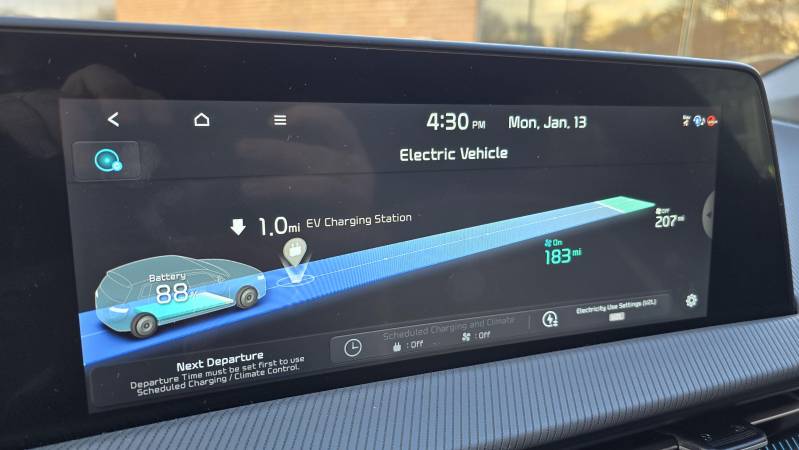
Protecting Your Electric Vehicle's Battery in Freezing Temperatures
Understanding how cold weather affects your EV's battery and motor systems is crucial for winter driving success. During our winter testing of the Kia EV6, the onboard range management system proved invaluable, providing real-time feedback on how different vehicle systems impacted range - from showing a 20-mile gain by adjusting HVAC settings to calculating the impact of heated seats and other accessories.
- Extreme cold significantly impacts lithium-ion battery chemistry, reducing the speed of chemical reactions that produce power - this can result in temporary capacity reductions of up to 40% at sub-zero temperatures and increased internal resistance that affects both charging and discharging capabilities. However, this capacity isn't lost permanently; it returns as the battery warms up.
- Cold temperatures affect not just the battery but also the motor systems themselves - the viscosity of lubricants increases, and the efficiency of power electronics decreases. Modern EVs compensate for this by adjusting power delivery and regenerative braking strategies, which is why you might notice slightly different pedal feel and regen behavior on cold mornings.
- Battery thermal management systems work harder in extreme cold, consuming additional power to maintain safe operating temperatures. This is why you'll see faster range depletion when parked outside in freezing weather - your car is actively working to prevent the battery from getting too cold, similar to how a refrigerator works harder on hot summer days.
Exciting developments in solid-state battery technology and advanced electrolyte formulations promise to significantly reduce cold weather impacts in future EVs, with some prototype cells showing minimal performance degradation even at temperatures as low as -4°F (-20°C). While these developments may take a decade (or more), in the short term, advances with temperature monitoring sensors and improved pre-conditioning technology will help bridge that gap.
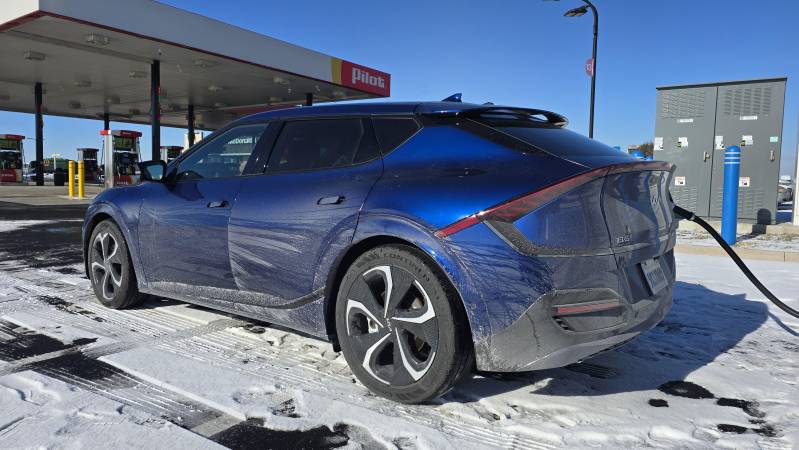
EV Tech Is Winter-Ready, But More Consumer Education Is Needed
EVs excel in winter conditions through thoughtful preparation and strategic operation. The combination of instant torque control, weight distribution from the battery pack, and advanced traction systems actually gives EVs distinct advantages in snow and ice compared to traditional vehicles. For the modern adventurer, mastering winter EV driving opens up new possibilities for sustainable cold-weather road trips while maintaining the cutting-edge performance these vehicles deliver year-round.
Hey James Hills wants you to share this!
